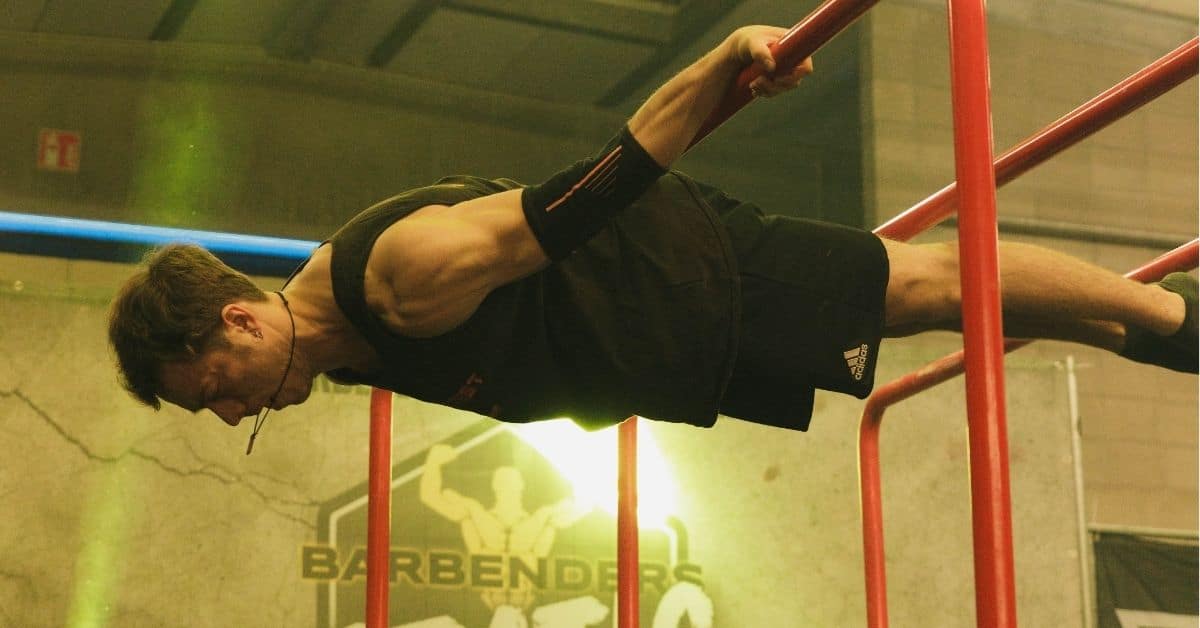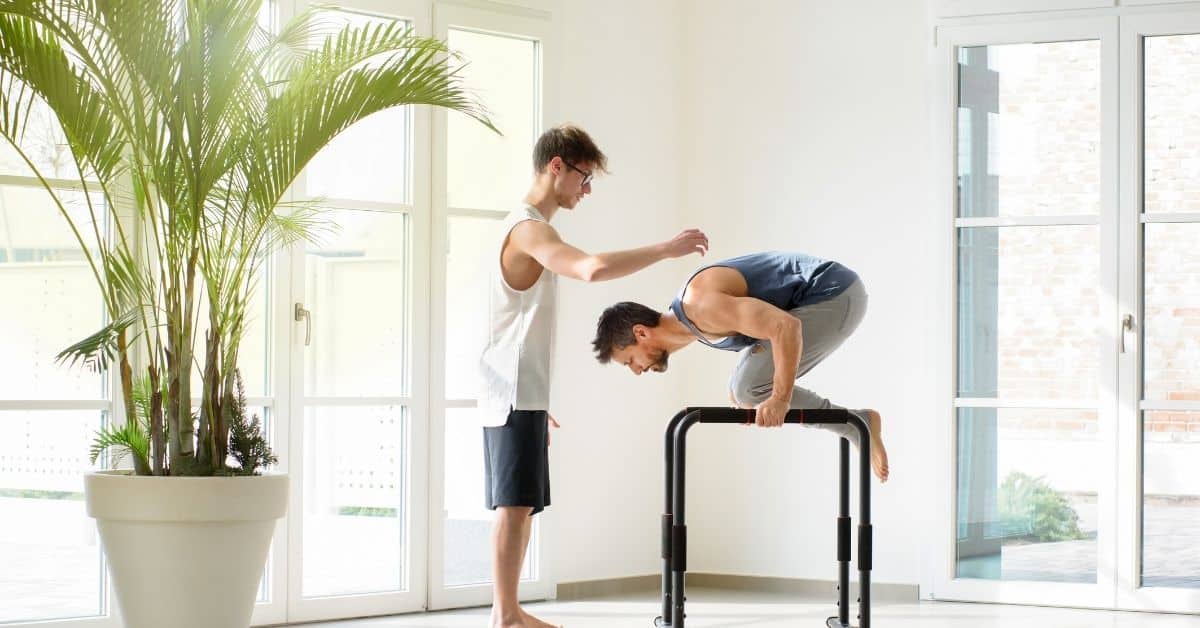Many people suffer from lower back pain. There is growing evidence that incorrect posture and movement patterns are a common cause. In fact, they can be the main reason for recurring pain sensations. Modern-day working conditions are often not good for you lower back. Luckily, you can reduce or even get rid of soreness altogether. In order to achieve this, you have to improve you posture. The deadlift exercises is one of the best exercises to achieve reduction in lower back pain.
Lower Back Pain: Deadlift Exercise
The deadlift exercises that is recommended in case of lower back pain focus on three things.
- Optimal movement patterns;
- Spinal alignment and
- Effective activation of stabilizing muscles around the abdomen.
Optimal Deadlift Technique
It is important to start with a low weight to reduce the injury. During the following weeks you can increase your strength too. Once you experience less pain you can start increasing the exercises and load. In the case of deadlifts, it is important to start slow with a perfect technique rather than lifting a heavy load. Click here if you want to be sure how to do it. The exercise will affect the abdomen and lower back muscles. It will reduce lower and recurring back pain.
I can’t do a deadlift exercises!
No Problem! You can do several things to improve core stability and decrease lower back pain. Exercises like the superman, plank or bridge are all great. Above all, we highly recommend performing deadlifts 2 to 3 times a week. It will benefit you a lot. But make sure you combine static exercises with dynamic ones. By doing that you train the different muscles in several ways.
It’s difficult to write down the most optimal technique for the deadlift exercises. Therefore we included a video which shows you how to master the deadlift.
Stay Active Despite Lower Back Pain
It is very important to stay active when you are suffering from lower back pain. A combination of low weight core stability exercises and deadlifts shows the best results. It leads to much improved daily functioning. Because these exercises reduce discomfort and increase strength.
Start Slow
Of course, the body needs time to rest to get rid of an injury. So make sure to move in a range of motion that is pain-free. For instance, relaxed walking short distances. This increases your blood flow. And repairing mechanisms in the body can work peacefully.
Stay Pain-Free
Even when you train your core muscles you can get back problems. Therefore, when you experience lower back pain don’t overdo your exercises. Make sure you move in a way that is not uncomfortable. You should do your daily work and activities without aching. Start building it up slowly.
Takeaway
In conclusion, training your core stability with the deadlift decreases the chance of lower back pain. Some other great exercises are bridging, planking and side bridging. You can easily perform them in your workout routine. In fact, it will take you only 5 to 10 minutes to do them. And you can do most of them at home. If you have a serious back injury take some rest and do simple activities like walking short distances. However, if the pain does not go away, don’t hesitate to see a physical therapist.
There is More You Can Do
We are happy to help if you want more information about exercises. Our online coaches are qualified phyisiotherapists and easy to reach. In addition to exercise other treatments can benefit you as well. Especially in the case of back pain caused by inflammation there are natural remedies you can use. For example, turmeric powder containing curcumin is being rerported as a great supplement for those who suffer from back pain. Of course, you should inform yourself well before taking supplements. And feel free to ask you general practitioner for additional information.
- Dankaerts W, O’Sullivan P, Burnett A, Straker L. Altered patterns of superficial trunk muscle activation during sitting in nonspecific chronic low back pain patients: importance of subclassification. Spine (Phila Pa 1976). 2006;31:2017- 2023. http://dx.doi.org/10.1097/01. brs.0000228728.11076.82
- Dankaerts W, O’Sullivan P, Burnett A, Straker L. Differences in sitting postures are associated with nonspecific chronic low back pain disorders when patients are subclassified. Spine (Phila Pa 1976). 2006;31:698-704. http://dx.doi. org/10.1097/01.brs.0000202532.76925.d2
- O’Sullivan P. Diagnosis and classification of chronic low back pain disorders: maladaptive movement and motor control impairments as underlying mechanism. Man Ther. 2005;10:242-255. http://dx.doi.org/10.1016/j. math.2005.07.001
- Sahrmann SA. Diagnosis and Treatment of Movement Impairment Syndromes. St Louis, MO: Mosby; 2001.
- Van Dillen LR, Maluf KS, Sahrmann SA. Further examination of modifying patient-preferred movement and alignment strategies in patients with low back pain during symptomatic tests. Man Ther. 2009;14:52-60. http://dx.doi. org/10.1016/j.math.2007.09.012
- Sahrmann S. Movement System Impairment Syndromes of the Extremities, Cervical and Thoracic Spines. St Louis, MO: Elsevier/Mosby; 2011.
- Vibe Fersum K, O’Sullivan P, Skouen JS, Smith A, Kvåle A. Efficacy of classification-based cognitive functional therapy in patients with non-specific chronic low back pain: a randomized controlled trial. Eur J Pain. 2013;17:916-928. http://dx.doi. org/10.1002/j.1532-2149.2012.00252.x
- Comerford M, Mottram S. Kinetic Control: The Management of Uncontrolled Movement. Edinburgh, UK: Elsevier/Churchill Livingstone; 2012.
- Comerford MJ, Mottram SL. Functional stability re-training: principles and strategies for managing mechanical dysfunction. Man Ther. 2001;6:3-14. http://dx.doi.org/10.1054/ math.2000.0389
- Costa LO, Maher CG, Latimer J, et al. Motor control exercise for chronic low back pain: a randomized placebo-controlled trial. Phys Ther. 2009;89:1275-1286. http://dx.doi.org/10.2522/ ptj.20090218
- Ferreira ML, Ferreira PH, Latimer J, et al. Comparison of general exercise, motor control chronic low back pain: a randomized trial. Pain. 2007;131:31-37. http://dx.doi.org/10.1016/j. pain.2006.12.008 exercise and spinal manipulative therapy for
- Macedo LG, Latimer J, Maher CG, et al. Effect of motor control exercises versus graded activity in patients with chronic nonspecific low back pain: a randomized controlled trial. Phys Ther. 2012;92:363-377. http://dx.doi.org/10.2522/ ptj.20110290
- Tsao H, Hodges PW. Persistence of improvements in postural strategies following motor control training in people with recurrent low back pain. J Electromyogr Kinesiol. 2008;18:559-567. http://dx.doi.org/10.1016/j. jelekin.2006.10.012
- Byström MG, Rasmussen-Barr E, Grooten WJ. Motor control exercises reduces pain and disability in chronic and recurrent low back pain: a meta-analysis. Spine (Phila Pa 1976). 2013;38:E350-E358. http://dx.doi.org/10.1097/ BRS.0b013e31828435fb
- Escamilla RF, Francisco AC, Kayes AV, Speer KP, Moorman CT, 3rd. An electromyographic analysis of sumo and conventional style deadlifts. Med Sci Sports Exerc. 2002;34:682-688.
- Hamlyn N, Behm DG, Young WB. Trunk muscle activation during dynamic weight-training exercises and isometric instability activities. J Strength Cond Res. 2007;21:1108-1112. http:// dx.doi.org/10.1519/R-20366.1
- Nuzzo JL, McCaulley GO, Cormie P, Cavill MJ, McBride JM. Trunk muscle activity during stability ball and free weight exercises. J Strength Cond Res. 2008;22:95-102. http://dx.doi. org/10.1519/JSC.0b013e31815ef8cd






